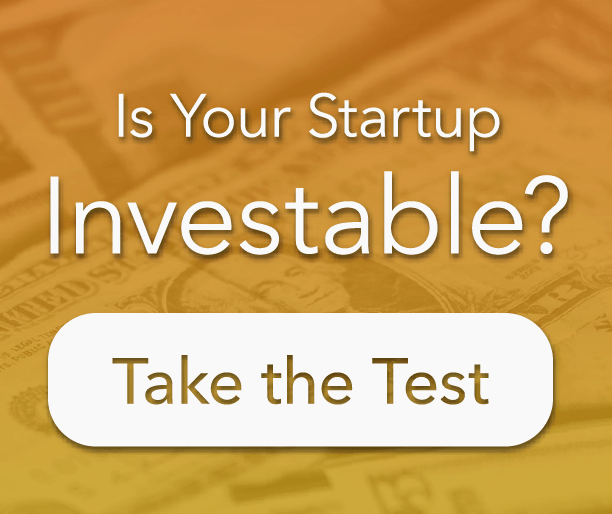
Any entrepreneur who is serious about his trade will need to know about the term sheet.
If an idea is successful and people are willing to pay money for it, then the day will come when it is time to scale. Scaling is a capital-intensive situation requiring a good amount of money to expand the business into new markets.
This is when the entrepreneur seeks capital from investors. The medium through which the entrepreneur and investor communicate financially is the term sheet. A strong understanding of the term sheet is invaluable to both the entrepreneur and the investor to come to a mutually beneficial agreement.
In part 1 of this series, we answered two questions about the term sheet:
- What does a term sheet look like?
- Is the term sheet a legally binding document?
In this post, we are going to discuss the first section of the term sheet: the offering terms. The offering terms contain six statements:
- Closing Date
- Investors
- Amount Raised
- Price Per Share
- Pre-Money Valuation
- Capitalization
Let’s break down the meaning of each of these statements.
Closing Date
The closing date is the day the transaction is expected to take place. This language will often look like:
Sale of the Series A Preferred is anticipated to take place _______, 20__.
It is important to set a closing date so that the process keeps moving and there is an end in sight for both parties. Another important date to include in the term sheet is a “Valid through” date, where the terms offered are valid only through a set date. The language for this is usually under the title and sounds like this:
(Valid for acceptance until _______, 20__)
How long does it take venture capitalist to close on a deal?
While the range is dependent upon individual firms, one venture capitalist mentioned that if a deal “smells right,” it can take merely hours to close the deal.
But typically it takes longer than that. Capital Connection surveyed over 500 venture capital firms and found that more than 4 out of 5 reported they were able to close a deal in less than 60 days, with 41% saying they had closed a deal in under 30 days. The average for all respondents was roughly 40 days.
Investors
After the date, the next piece is the “who” — the people involved in the deal. Typically, the startup seeking funding is denoted as the “Issuer” of the term sheet. Below that, you will find all the participating parties.
This will be as simple as a list of the names separated by commas: ABC Venture Capital, L.P and its affiliated partnerships, [others, of applicable].
Amount Raised
This is where it gets interesting. The amount of the financing is written here and sounds similar to the following:
An aggregate of $10 million, representing a 10% ownership position on a fully diluted basis, including shares reserved for an employee option pool.
Then the individual investment amounts for each investor are listed:
AVC Capital Group $5 million
Other Investor 1 $2.5 million
Other Investor 2 $2.5 million
What does all this mean?
The aggregate is the sum of the monies raised. The ownership position is the amount of the company the investors are purchasing, which indicates a premoney valuation of $100 million. For an explanation on valuation, keep reading below.
Giving Away Startup Ownership: How Much is Too Much?
Dilution
Fully diluted means that the rights to purchase equity should be included in the valuation calculation. Dilution is important in two ways: up front, on the term sheet, and down the road, in the event of issuance of new stock. For now, we will explain what fully diluted means as it pertains to the offering terms of the term sheet.
Both entrepreneurs and investors want to make sure the company has sufficient equity (or stock options) reserved to compensate and motivate its workforce. This is also known as the employee pool or option pool. So when the term sheet refers “10% ownership position on a full diluted basis,” this means that the 10% of ownership is accounting for the employee pool already.
In other words, if an investor purchases 10% of a company and then a 20% employee pool is added afterwards, the investor’s 10% becomes diluted to effectually 8.3%. Where if the term sheet states that the valuation was fully diluted, the employee pool is a part of the 100% of which the investor now owns 10%, leaving 70% of equity remaining.
Price Per Share
One question many founders have is: how many shares should I use to incorporate my company?
Sean Crockett, startup lawyer turned entrepreneur, said, “Standard practice for a Silicon Valley tech startup is to incorporate as a Delaware C Corp and authorize 10 million shares of common stock with a par value of 0.001 or 0.0001 dollars per share.”
The wide number of shares at a menial worth allows the startup to reward and recruit partners easily. Think of it this way: if a startup had 10 shares, then it can only sell/give equity on a 10% basis. That’s a lot! It’s the same reason we have pennies, nickels, and quarters instead of just $100 bills. Not everything is worth $100. In the same way, a quality employee may come work for a startup for .05% equity instead of 10%. Let’s say one share is worth .0001 dollars, then the employee would receive 500 shares, instead of 100,000 shares!
Valuation
There are two different ways to discuss valuation: premoney and postmoney.
Premoney valuation is what the investor is valuing the company at today, before investment, while the postmoney valuation is simply the premoney valuation plus the contemplated aggregate investment amount.
In other words, when an investor says, “I’ll invest $5 million at a valuation of $20 million,” the VC usually means the postmoney valuation. In this situation, the VCs expectation is that a $5 million investment will buy 25% of the $20 million postmoney company. If it were a premoney valuation (which is typically what entrepreneurs hear), the investor would be purchasing 20% of the $25 million company.
Capitalization
A term sheet will include a capitalization table (cap table) which summarizes who owns what part of the company before and after financing. Because of the complexity of the math involved in the cap table, we cover the cap table in a separate post: The Holy Grail of Entrepreneurship: The Term Sheet, Part 3 — The Cap Table.
NOTE: This article may discuss issues for which legal advice should be considered prior to a decision or agreement with a third party. It should be noted that the author is not an attorney, and FundingSage is not a law firm. FundingSage’s employees and affiliates do not provide legal advice. We recommend you seek the services of an attorney if legal advice is required.









